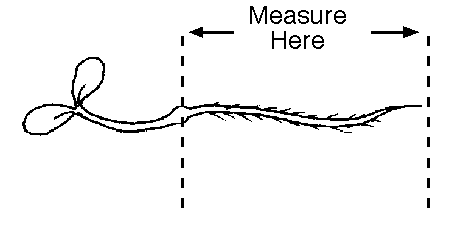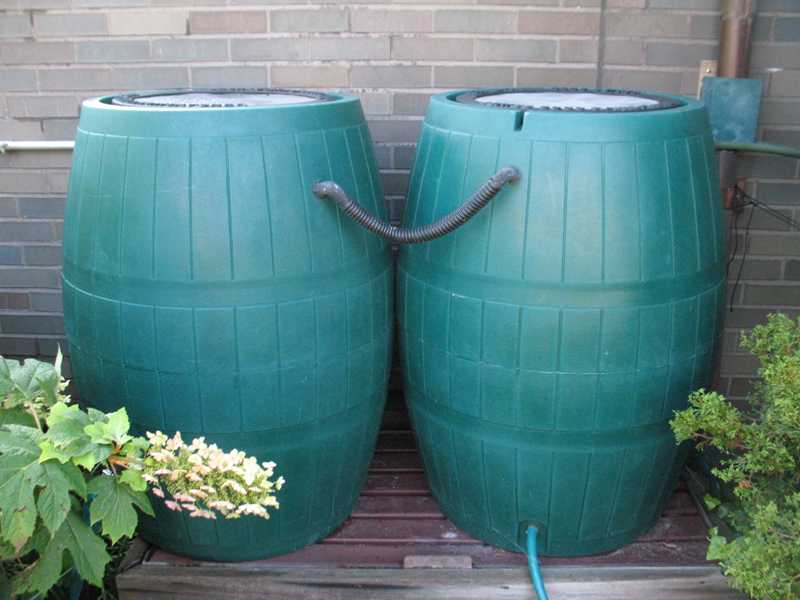Cover crops have many potential benefits in agriculture. They can improve numerous soil physical, chemical, and biological characteristics, improve water retention and utilization, reduce erosion, control weeds, enhance biological control of pests and help manage crop nutrients, particularly nitrogen.
Nitrogen is a primary plant nutrient that is an important factor in determining a crop’s health and productivity. However, it can also be a financially and environmentally costly farming/gardening input. Synthetic nitrogen fertilizers can play a significant role in polluting our water and air resources, while also consuming a great deal of fossil fuel energy in their production and transportation to the farm. Cover crops can play an effective role in reducing the need for synthetic nitrogen fertilizers.
The goal of this activity is to introduce the idea that nitrogen can be produced and conserved on a farm biologically through the use of cover crops. In order to make good use of a cover crop in a farm’s nutrient management strategy, one needs to estimate how much nitrogen a mature cover crop contains. This estimate can then provide an approximate figure of how much nitrogen the cover crop will supply the soil reserve and
next season’s crop. The following reference resources are provided to improve your familiarity with the topic.
Resource ReferencesNitrogen Cycle. Kimball's Biology Pages, John W. Kimball
http://users.rcn.com/jkimball.ma.ultranet/BiologyPages/N/NitrogenCycle.htmlCover Crop Resource Page. UC Sustainable Agriculture Research and Education
Program (SAREP)
http://www.sarep.ucdavis.edu/ccrop/Cover Crops for California Agriculture. Miller, P. R., W. L. Graves, et al. 1989.
University of California, DANR Publication 21471, Oakland CA
Introduction
Crops generally require more nitrogen than any other nutrient, usually between 80 and
200 lbs of nitrogen per acre. Encouraging nitrogen fixation via the mutualistic
relationship between legumes and associated Rhizobia bacteria is one of the most
important ways farmers can add nitrogen to the soil in sustainable farming systems.
However, it is important for farmers to know the amount of nitrogen that such a cover
crop contains and may supply to a subsequent crop. In this exercise, participants will
estimate the nitrogen content of a legume cover crop. They will harvest and weigh all of
the above ground biomass of a cover crop from a number of sample sites in the field.
These weights will then be used to estimate the amount of nitrogen in the cover crop.
Such information can be used by a farmer to help make decisions about when to mow
and/or turn a cover crop into the soil or how much additional nitrogen may need to be
supplied to the crop from other sources.
To Lead This Activity You Need to Know• cover cropping
• the nitrogen cycle and its relationship to soil fertility management
• biological nitrogen fixation
• nitrogen requirements for common crops
Key Concepts• nutrient cycles
• plant nutrition
• mutualism
• nitrogen fixation
• cover crop
• biomass
Objectives• Engage participants in assessing the nitrogen contributing performance of a cover crop.
• Introduce the concept of mutualistic relationships in the context of agriculture.
• Demonstrate the economic and ecological benefits of biologically managed soil fertility.
Materials• 3 ft x 3 ft (or for metric measurements, 1 meter x 1 meter) square quadrats, made
from wood, PVC pipe or similar material (1 per team of 3 – 4 students)
• hedge shears (1 - 2 shears per team)
• burlap or woven fabric bags and a method to label them (2 – 3 per team)
One of each per class:
• a scale or balance with the ability to measure full bags weighing 20 - 30 lb (or10-
15 kg) (note: if measuring a sample from an intercrop of legumes and grasses,
and the primary scale can not make measurements less than 1 pound, a second,
more sensitive scale is necessary)
• conversion factor chart (included below)
• calculator
Activity (45-50 minutes)(The instructions and examples below use English units; however this exercise can be done using metric measurements; the appropriate information and conversion factors are provided in both English and metric units in the tables.)
1. Before starting the activity discuss the nitrogen cycle, nitrogen fixation, and the concept of mutualism.
2. Arrange teams of 3-4 students per team.
3. Have them weigh and record the weights of their empty bags.
4. Demonstrate how to enter the cover crop field and place the quadrat so that you can sample all of the above ground plant material from the space being sampled.
5. Have each team choose a sample site in the field, place their quadrats at their sample sites and use their hedge shears to cut and remove all of the above-ground plant matter.
6. Label the bag(s) with the name of the team taking the sample and the type of cover crop being sampled.
7. Have each team weigh their bags and record the weights on the student worksheet.
8. Use Table 1 to determine the appropriate cover crop conversion factor based on type of cover crop being sampled. Multiply the cover crop sample weight by the conversion factor to arrive at the total amount of nitrogen in the cover crop.
Discussion and Reflection 1. Select a common vegetable crop they would like to grow on the cover crop field in the next growing season (Table 3. of Student Worksheet).
2. From the table, identify the nitrogen needs of each selected vegetable crop.
3. Calculate how much nitrogen the cover crop could provide each selected crop as a percentage of that vegetable’s nitrogen needs (Table 4. of Student Worksheet).
Based on the above, encourage the students to consider the broad economic value of the cover crop providing biologically generated on-site fertilizer.
Student WorksheetEstimate the nitrogen contribution of a cover crop by using the weight of your biomass sample. Answer questions A,B,C,D, and E.
A. What is the weight of your cover crop biomass sample? ________ lb or kg (circle one)
B. What is the conversion factor for your particular cover crop? _______ (see Table 1.)
Table 1. Cover Crop Conversion Factors from Wet Weight to Nitrogen Content
Cover Crop Conversion Factor (Metric kg/hectares)
Vetch: Lana (Wooly Pod) or Purple 28 59
Bell Bean 18 37
Berseem Clover 23 48
Blackeyed pea (Cowpea) 21 44
Grass (average) 11 23
Legumes (average) 23 40
C. What is the estimated total amount of nitrogen contributed by the cover crop to the soil
for the next season?
________________________ X __________________ = ______________________ kg/hectare
Cover Crop Cover Crop Nitrogen Contribution
Sample Weight Conversion Factor by Cover Crop
If you were to plant your favorite vegetable in this field next season, what would it be?__________________________________
D. What is that vegetable’s nitrogen need? _______ lbs/acre or kg/hectare (circle one)
(Select from table 2.)
Table 2. Typical Nitrogen (N), Needs of Vegetable Crops
Vegetable Crop (kg/ha)
Artichoke 55-110 Lettuce 135-200
Asparagus 90-165 Muskmelon 110-165
Bean 65-135 Onion 135-335
Broccoli 110-225 Pepper, Chili 90-165
Brussel Sprouts 110-225 Pepper, Sweet 135-270
Cabbage 110-225 Potato, Irish 165-335
Carrot 90-165 Potato, Sweet 90-135
Cauliflower 110-225 Spinach 90-165
Celery225-335 Squash, Summer 90-165
Corn, Sweet 135-270 Tomato 110-225
Cucumber 90-165 Tomato, Cherry 110-225
Garlic 110-225 Watermelon 110-180
Source: FERTILIZER GUIDE FOR CALIFORNIA VEGETABLE CROPS
K. B. Tyler and 0. A. Lorenz, Department of Vegetable Crops, University of California, Davis, 1991
(Available at: http://vric.ucdavis.edu/veginfo/topics/fertilizer/fertguide.html)
E. What percentage of the vegetable crop’s nitrogen need from the soil was potentially
contributed by the cover crop? _________ %
_____________________ ÷ ____________________ X 100 = ____________________Cover Crop Vegetable’s % Nitrogen Supplied
Nitrogen Contribution Nitrogen Need to Soil by Cover Crop




















